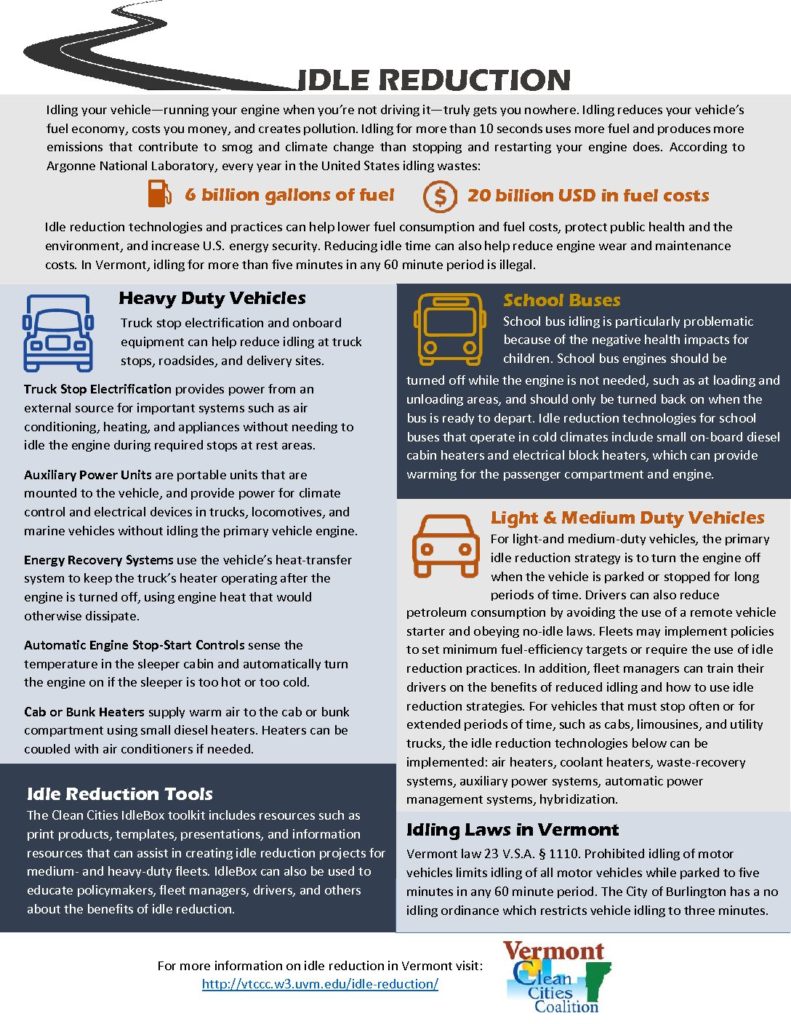Idling in Vermont

Did you know? Vermont’s passenger vehicles idle on a discretionary basis for 9.6 million hours annually, resulting in emissions of 36,500 metric tons of CO2. This translates into nearly 4 million gallons of fuel consumed each year. The low-hanging fruit of fuel economy, idling reduction is a simple way to use less fuel and minimize engine wear, reducing costs along with pollution and greenhouse gas emissions.
VT Motor Vehicle Idling Laws >>>
Idle Reduction Resources
Idle reduction describes technologies and practices that reduce the amount of time that engines idle unnecessarily. Reducing idling time has many benefits, including reductions in fuel costs, engine wear, emissions, and noise.
The Clean Cities IdleBox Toolkit has resources to assist with idle reduction projects for fleets with light- and medium-duty vehicles, including print products, templates, presentations, and informational fact-sheets. IdleBox tools can be used to educate and engage policymakers, fleet managers, drivers, and other decision makers about the benefits of reducing idling.
Idling can usually be reduced without compromising driver comfort or vehicle equipment operations. Learn about:
- Heavy-duty truck idle reduction technologies
- Medium-duty truck idle reduction strategies
- Light-duty vehicle idle reduction strategies
- School bus idle reduction strategies
Did you know that restarting your engine uses less fuel than idling for more than 30 seconds? Watch the video below to see this myth be busted.
